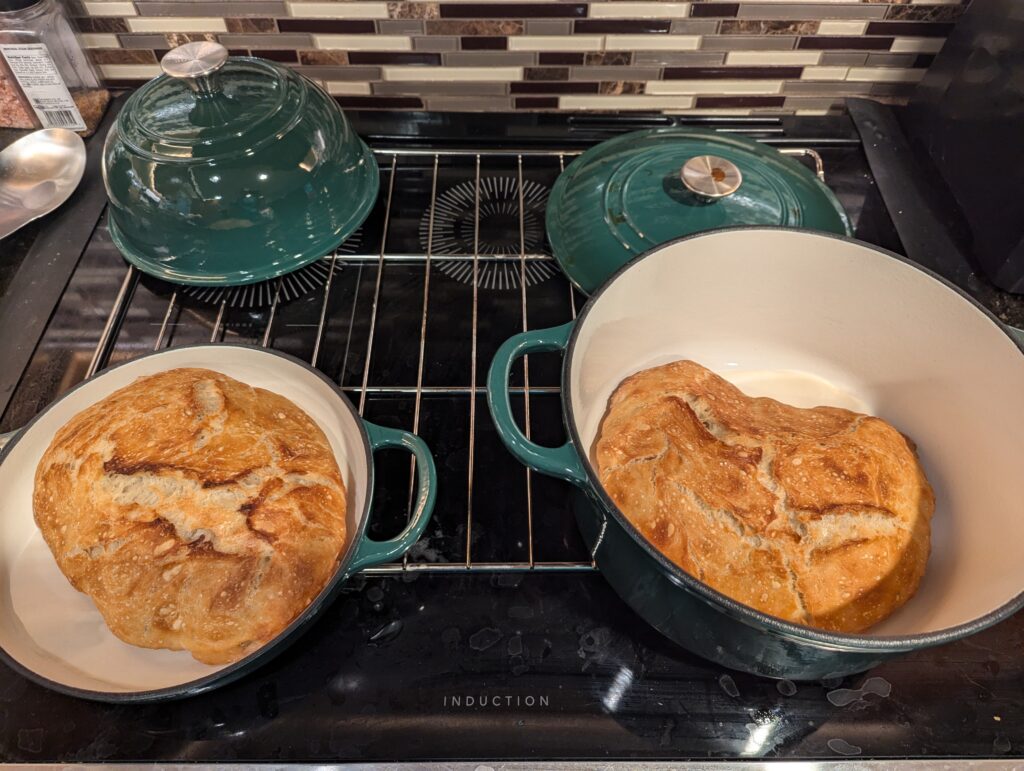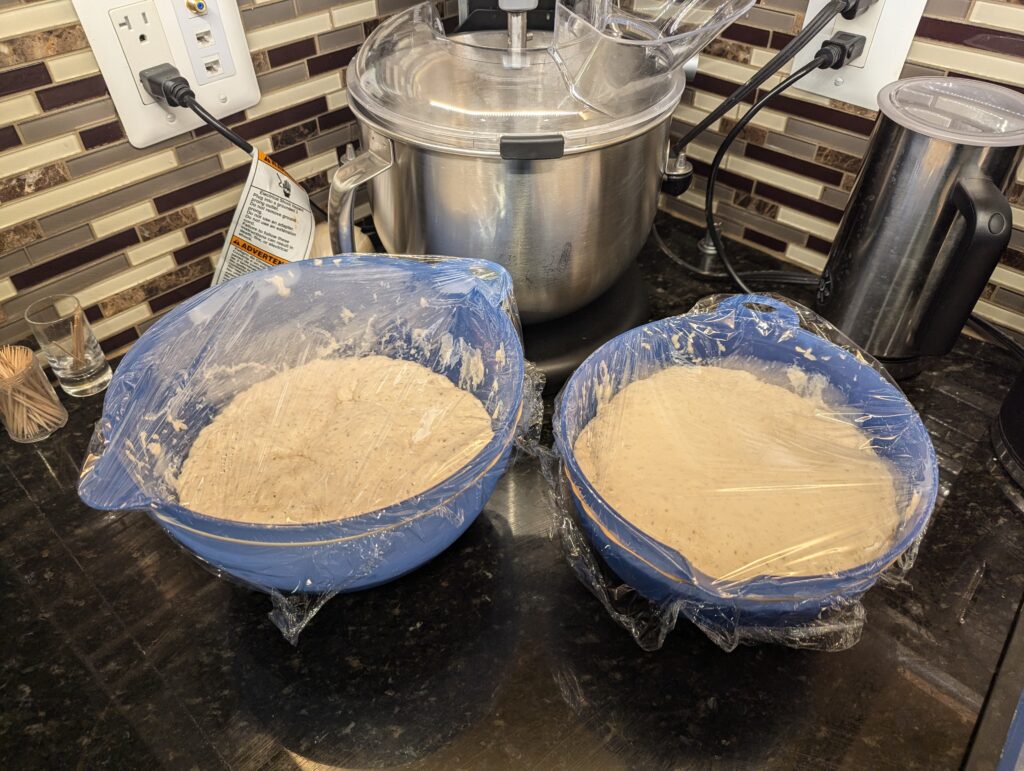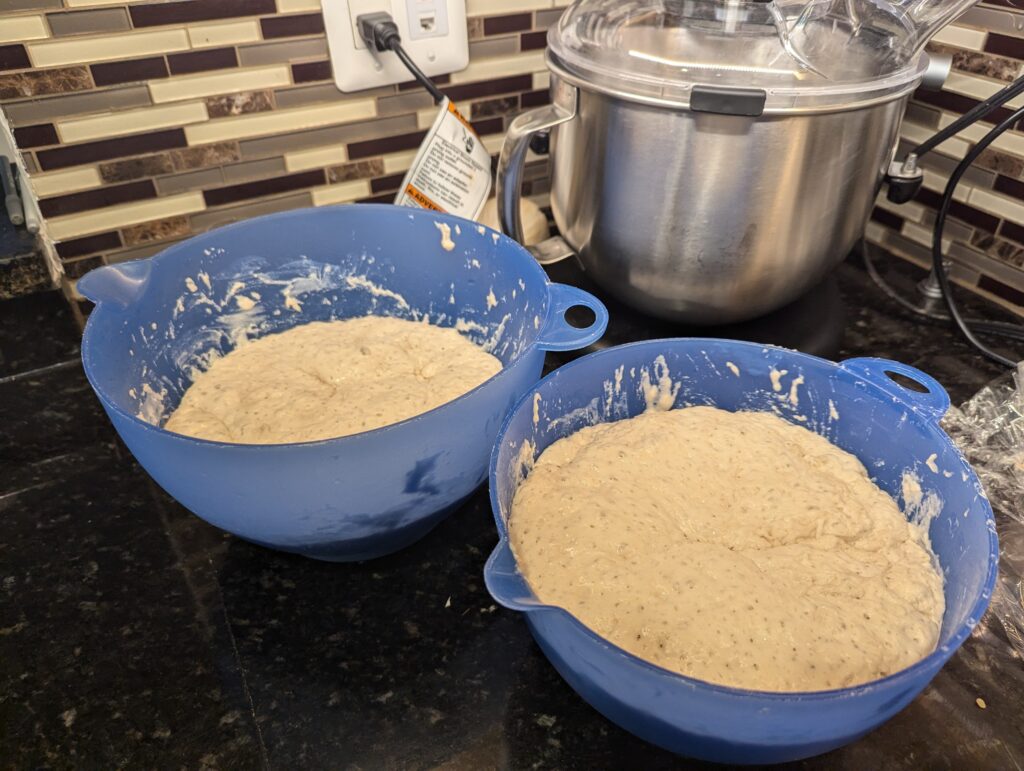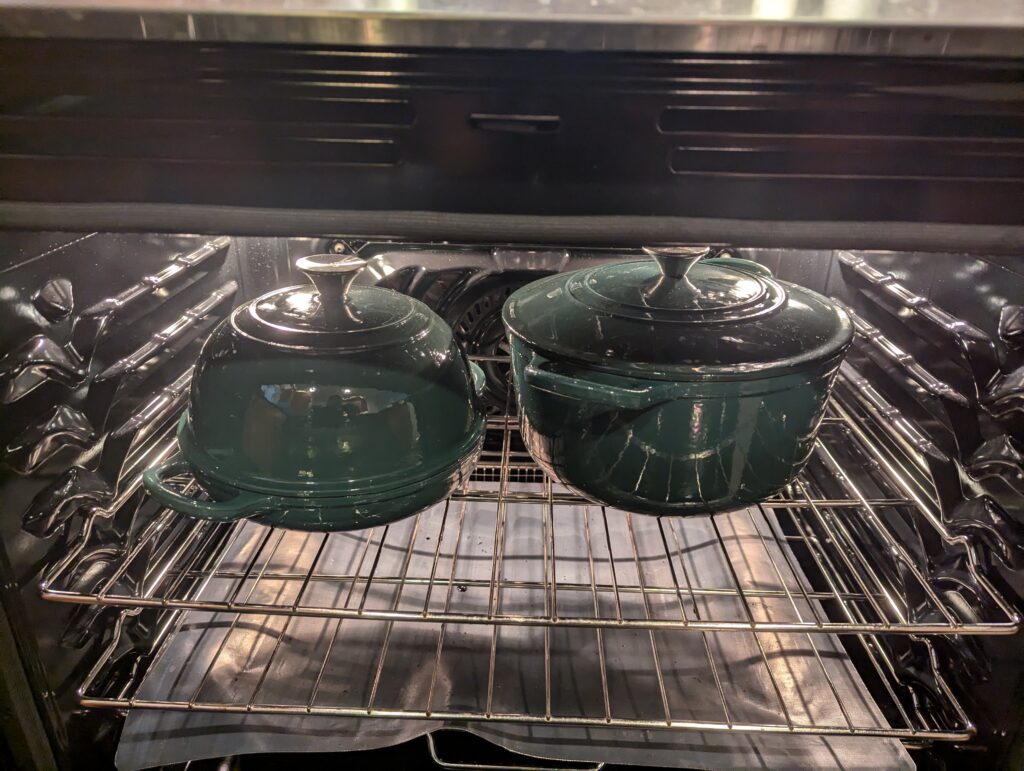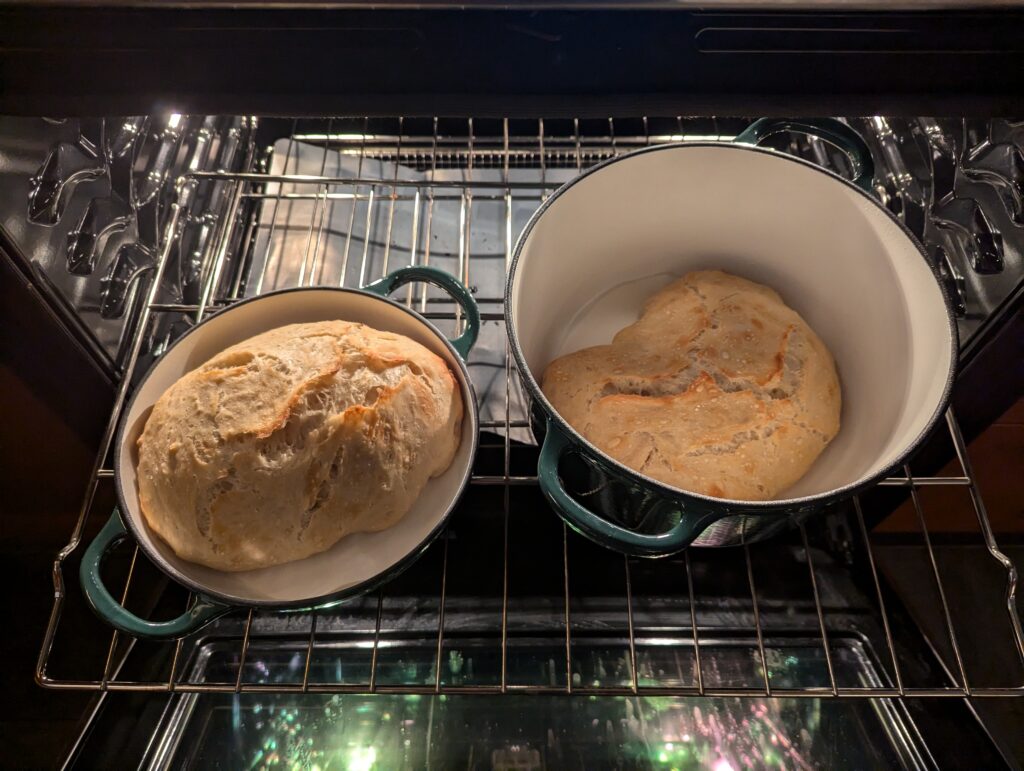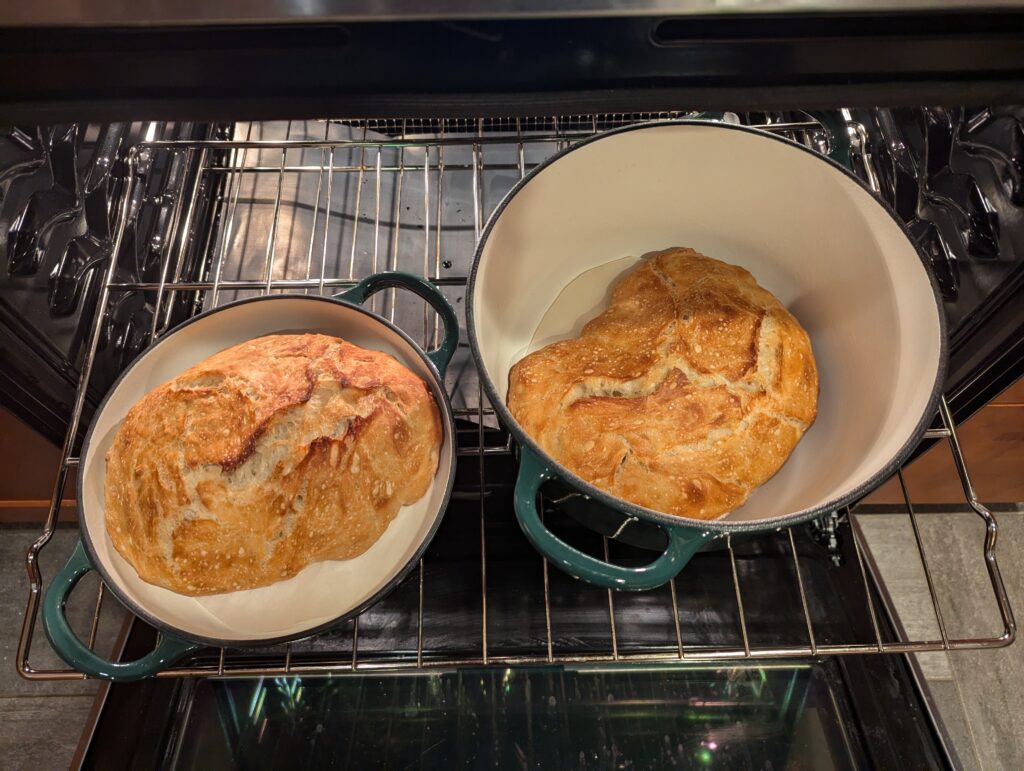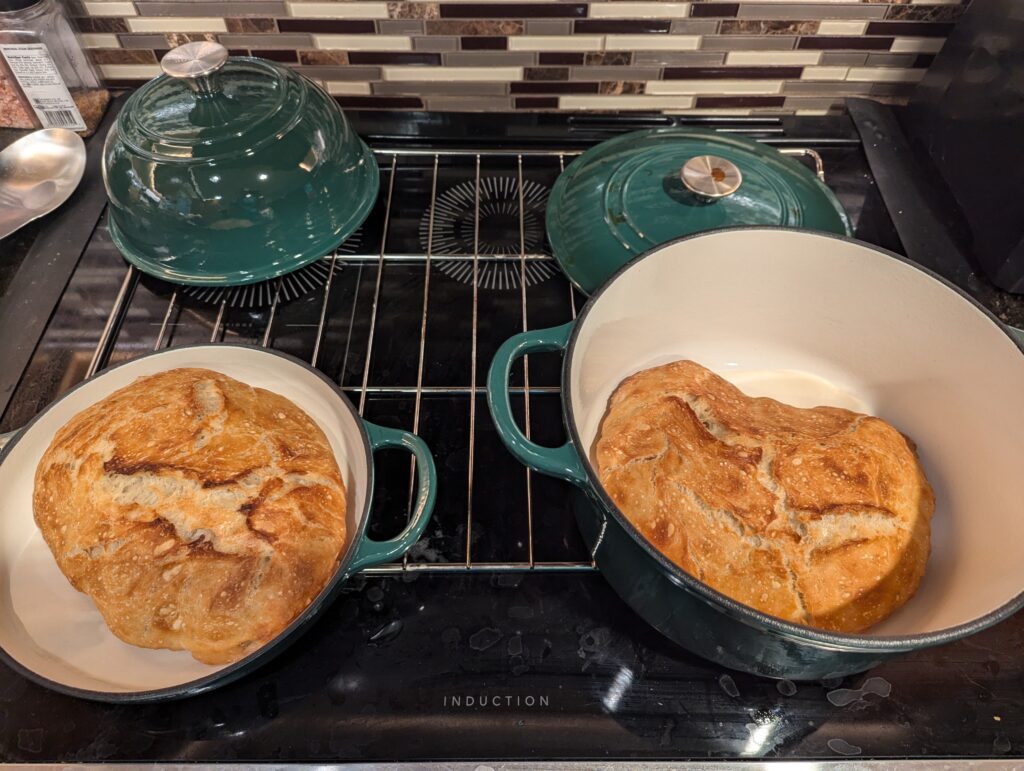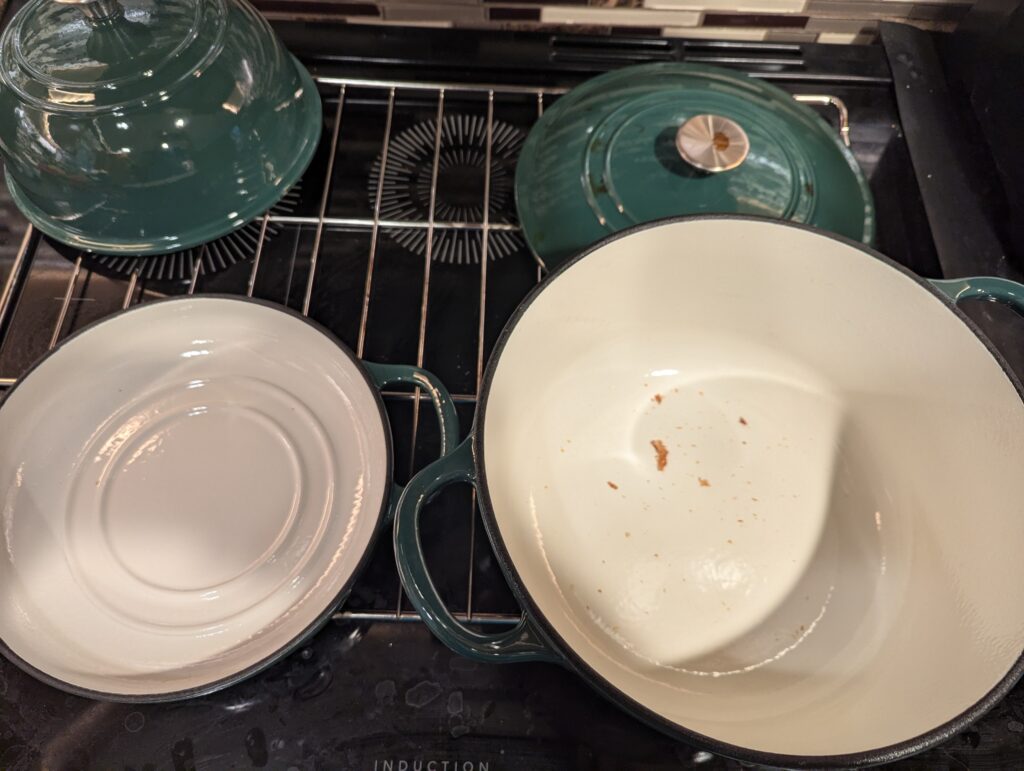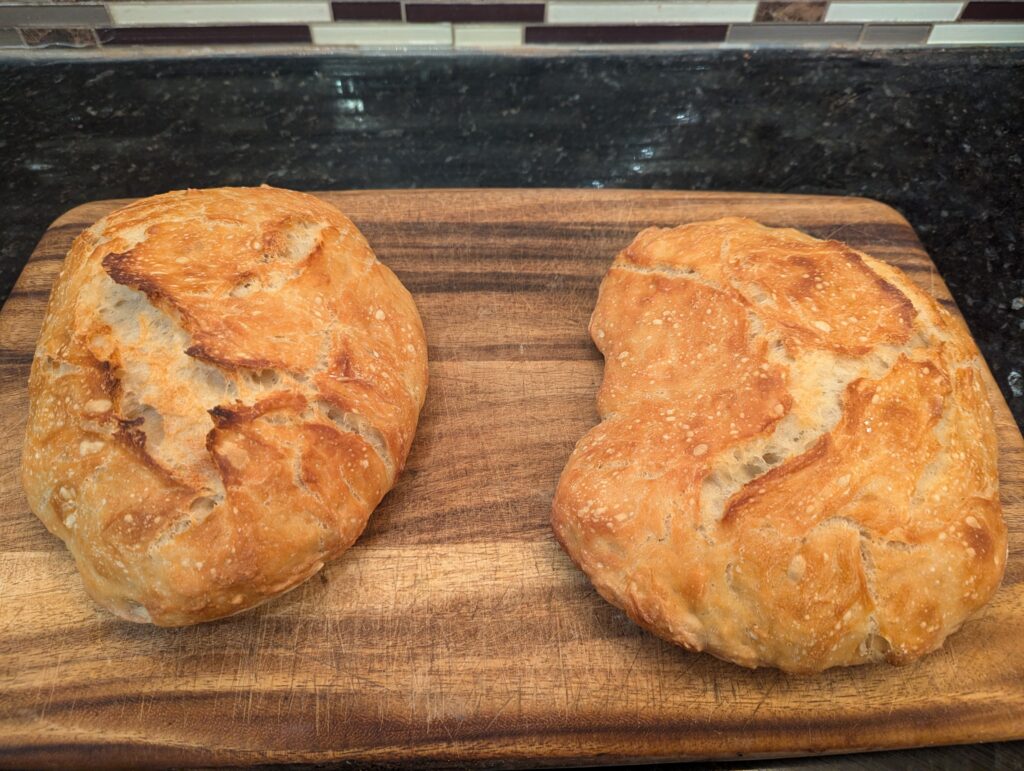Filed under: Recipes
There are a lot of commonalities between sourdough recipes, but everyone has their own take. For a basic loaf, here’s my favorite recipe so far. It’s adapted from Clever Carrot’s Beginner’s Guide. Basically their ingredients with my instructions.
Note that this recipe requires a lot of starter, so making it means I need to double the proportions I use in a typical feeding to 100g starter/100g flour/100g water. It’s ok if you don’t have the full amount of starter for feeding, but you want to end up with at least 200g at the end, so you may need to further increase flour and water if you’re short.
Ingredients
- 250g water
- 150g active (bubbly, risen, recently fed) sourdough starter
- 25g olive oil
- 500g flour
- 10g fine salt (I use pink Himalayan, but sea salt also works well)
Instructions
- Combine the first three ingredients in a large bowl. Mix it with a fork until completely combined
- Add the flour and salt, mixing with clean hands until fully combined into a dry, shaggy dough
- Cover the bowl with plastic wrap or a damp kitchen towel and let it sit for at least 30 minutes, preferably 60. This is the autolyse stage, which moisturizes the flour and helps the bread improve its structure. Yes, it’s ok to add the salt before this stage but you can wait to add it if you really want
- Stretch and fold. Once the dough has completed the autolyse step, uncover the bowl and pick up the far corner of the dough and fold it over itself. Turn the bowl 90 degrees and repeat. Do two more times. Your dough will be tall and stacked up in layers. This step improves the bread’s structure
- Cover with a wet towel and let rise in a warm place for 30 minutes. I use my oven set to 100ºF (bread proof mode)
- Repeat steps 4-5 until you’ve done three rounds of stretch and folds
- Let the dough rise until doubled in size in the warm place covered by a damp towel. I usually do 3 hours including the stretch and fold time in the 100ºF oven. It will take longer in a cooler environment
- Lightly flour a counter and dump the dough on the counter. You may need to use your fingers to loosen it from the bowl. Do another stretch and fold (#4) and slightly slide it around on the counter so that it is loosened and any seams on the bottom are sealed
- Put the towel on the bottom of the bowl and lightly flour it
- Pick the loaf up and put it in the bowl
- Cover the bowl and put it in the refrigerator for 8-24 hours. I recommend overnight. I use a plastic trashbag slid over the bowl and sitting on the excess to seal it in
- The next day, remove the bread from the fridge and put it on the counter
- Put an oven safe pot, like a cast iron Dutch oven with an oven-safe lid in the oven and preheat it to 450ºF for at least 15 minutes past the oven hitting temperature. Many just set the timer for an hour when they put the pot in the oven. Use the convection bake setting, if your oven has one
- Prepare a sheet of parchment paper that’s long enough to use the ends to easily place and remove the bread from the pot
- For a crispier crust, have 4-6 ice cubes ready
- Remove the preheated pot, place the parchment inside, then the bread, and use a very sharp or serrated knife to cut a 1″ deep cut across the loaf. Slightly curve it to be fancy
- Tuck half the ice on either side of the loaf under the parchment. Place the lid on and return to oven
- Reduce temperature to 400ºF and bake for 20 minutes
- Remove the lid and bake for another 40 minutes
- If desired, bake the loaf directly on the oven rack for the last 10 minutes to produce a crispier crust
- Remove loaf immediately from pan and cool on a wire rack (so the bottom doesn’t get soggy) for at least an hour before serving
This may seem like a lot of steps, but most of them quickly become second nature. You can produce excellent loaf after excellent loaf with this technique.
